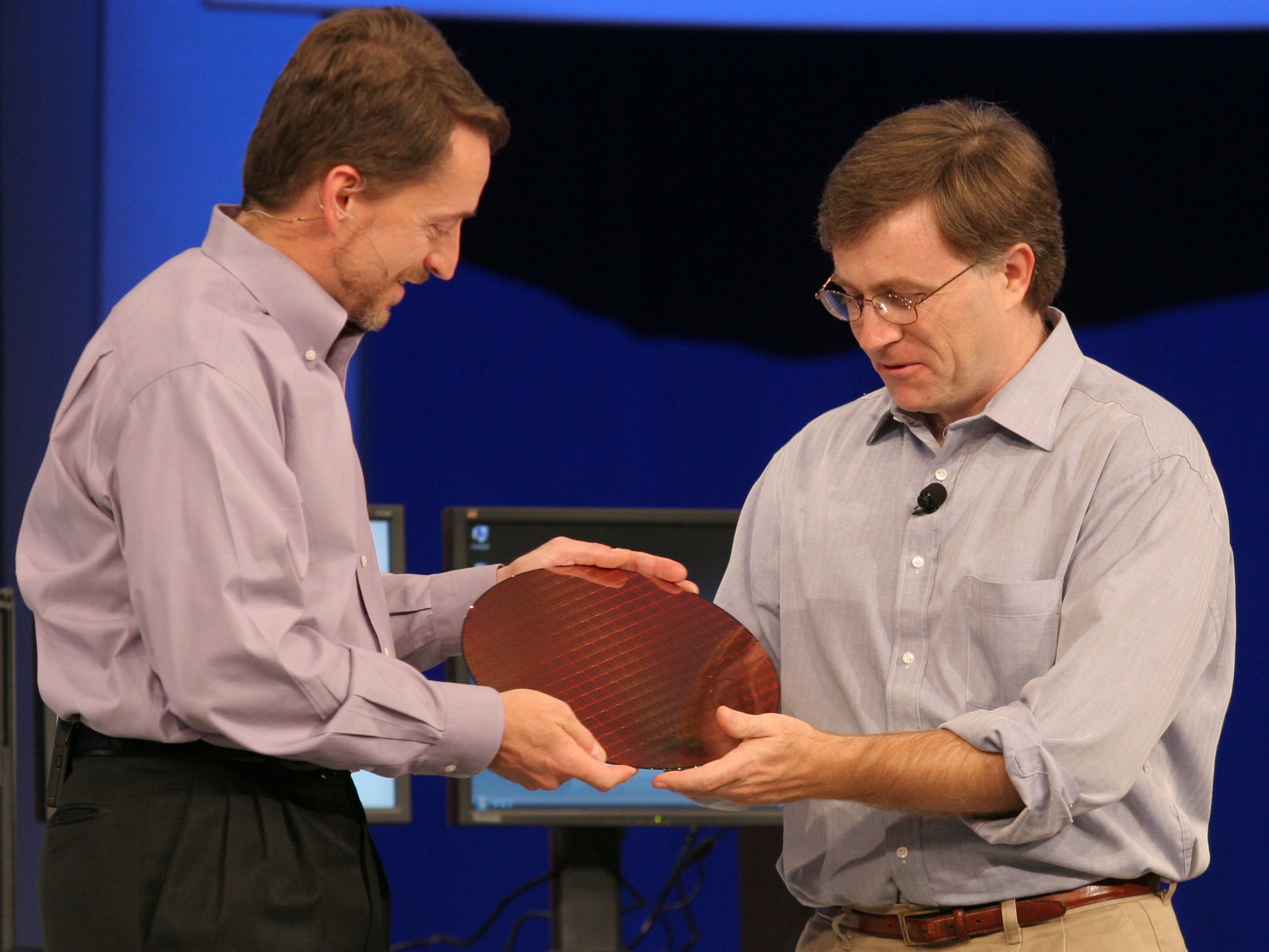Big bandwidth boost for next-gen Intel CPU
Dirt dished on 45nm Nehalem chip for 2008

More details of Nehalem, Intel's exciting new modular CPU architecture for 2008, have leaked. A massive boost in memory bandwidth, a new socket and a glimpse at the new QuickPath interconnect are the juiciest new titbits.
Due out in late 2008, Nehalem is Intel's next major CPU design following the Core 2 microarchitecture of 2006. As we reported previously, Intel revealed several key Nehalem features at its IDF conference in September.
New Intel roadmap?
The big news was an integrated memory controller, optional on-die graphics, the QuickPath interconnect and models with up to eight execution cores.
Now Japanese website PC Watch reckons it has got its hands on an Intel roadmap that dishes even more dirt. First up is a triple-channel memory controller with support for DDR3 memory at speeds up to 1,333MHz. Intel's current PC platforms are dual-channel.
Don't forget, that new memory controller is now on-chip rather than part of the motherboard chipset. With fully three channels, it should deliver a colossal leap in bandwith compared with existing Intel CPUs.
Hammering HyperTransport
The roadmap also provides the first details of Intel's HyperTransport-bashing Quickpath interconnect. In simple terms, QuickPath will be used to shuffle data in and out of the CPU and peripheral motherboard components.
It gets much more complicated from there. The site quotes a bandwidth of 6.4Gbps for each QuickPath link with each CPU sporting two links. That doesn't compare well with the headline aggregate rate of 41.6GB/s per link and up to three links per chip for the latest HyperTransport interconnect used by competitor AMD.
Sign up for breaking news, reviews, opinion, top tech deals, and more.
However, if that figure really refers to 6.4GT/s (or billion transfers per cycle) with each cycle transferring 32-bits, well, things look very different. In that scenario, QuickPath will pack 51.2GB/s per link.
A shedload of bandwidth
Put simply, that's a shed load of bandwidth. Combined with the big boost in memory bandwidth, a picture of a CPU and platform that can shunt an awful lot of data around is emerging. That's a very handy benefit for an architecture that is expected to scale to as many as eight cores.
It will also no doubt help the new dual-socket platform being cooked up to support Nehalem. Known as Tylersberg, PC Watch reckons the new chipset packs no less than four full 16-lane PCI Express 2.0 slots connected over QuickPath links via IOH bridge chips. Again, the implication is of immense bandwidth.
Hello HyperThreading
Elsewhere, the roadmap confirms several officially announced features including HyperThreading, which allows quad-core Nehalem processors to simultaneously crunch eight software threads.
Intriguingly, it also suggests that Intel's desktop chips will remain pegged in the 3-3.4GHz region for clockspeeds. That's very plausible given the 3GHz top speed of its recently-launched 45nm Penryn processors. More importantly, it means Nehalem chips will have to deliver a significant boost in clock-for-clock grunt if they are to crank out more performance overall.
For the record, Nehalem chips are codenamed Bloomfield in single-socket form and Gainstown in dual-socket trim. Both will reportedly use a new 1,366 LGA socket specification.
So what does Intel say?
When quizzed on the accuracy of the newly-emerged Nehalem specifications, Intel's UK representative remained cool. The usual "no comment on unannounced product" routine was as good as we got. Not that we blame him.
Official launch dates for Nehalem have not been divulged beyond a commitment to ship the new chip before the end of 2008. However, Intel has brought forward the launch of several recent processors. Don't be surprised if Nehalem rolls out before the end of summer '08.
Technology and cars. Increasingly the twain shall meet. Which is handy, because Jeremy (Twitter) is addicted to both. Long-time tech journalist, former editor of iCar magazine and incumbent car guru for T3 magazine, Jeremy reckons in-car technology is about to go thermonuclear. No, not exploding cars. That would be silly. And dangerous. But rather an explosive period of unprecedented innovation. Enjoy the ride.